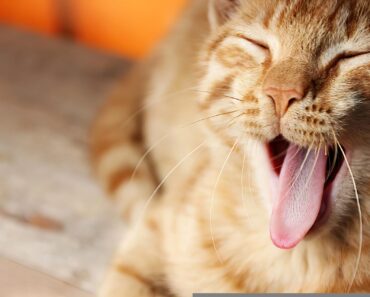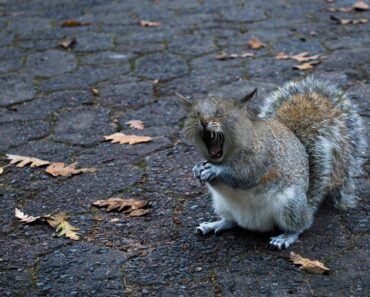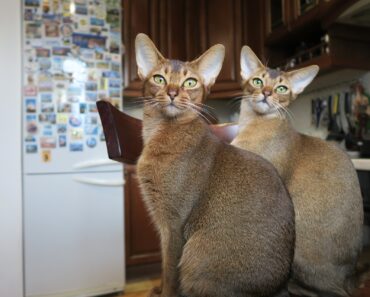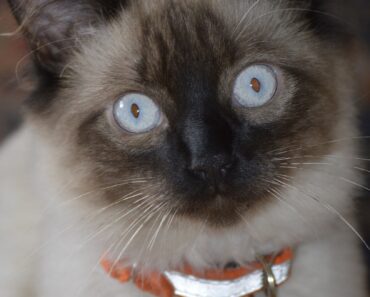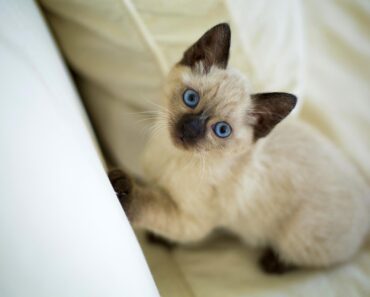
Exotic appearance is not the main advantage of a cat, but it adds charm. In addition, curly cat breeds hardly shed and do not need to be combed every day. “Lambs” have very different characters, which allows each family to choose the ideal animal.
Skookum
A young curly-haired cat breed that is the result of a cross between a Luperm and a Munchkin. They inherited their short legs from the latter and their unkempt hair from the Luperm. Skunks have a broad, shortened snout, which makes even adult cats look like kittens. In Native Americans, “skunkum” means untamable, powerful.
Short legs do not prevent them from running fast, climbing trees skillfully, or jumping high. The short-legged cat gene is not associated with musculoskeletal disorders. The character is similar to that of a Munchkin – agile, playful, communicative. Skunks are curious, play well with children and meet strangers.
Devon Rex
This curly-haired cat breed is often confused with the previous one, but it is easy to tell them apart: Devons have an oval head that lies on its side. Their large eyes and ears give them an alien look, and the fine curls only add to the effect. Their construction is slightly more compact than a stretched ledge.
Devon Rexes have an innate sense of humor and constantly make others laugh with deliberate pranks. This is how they get the attention they need. They are friendly, affectionate and cuddly, but do not tolerate rudeness. They are happy to communicate with all friendly creatures, are not shy and can defend themselves. They will be cared for as a Cornish pets.
Cornish Rex
Light and slender cats on high legs. The profile is almost straight, the large ears stick out vertically and the head is egg-shaped. The coat is almost devoid of covering and hair. The soft and resilient undercoat is curled in regular waves, reminiscent of astrakhan. It is the oldest breed of curly-haired cat, healthy and resistant.
The Cornish breed is suitable for sociable people, as it is affectionate, talkative and friendly. They do not tolerate loneliness and need daily company. They love children, guests, even dogs. Cornish love to play and are easy to train. Their grooming is simple: they have their ears cleaned once a week and a bath once every two months.
Hermann Rex
One of the rarest breeds of cats – its short, curly coat extends in small waves, curly lambs are found only on the back of the adult. The natural constitution of a robust medium-sized cat is a guarantee of good health. No shedding, low maintenance, tendency to obesity.
The German Rex enjoys company, but can quietly be left alone all day. She won’t make a fuss or spoil things, since people don’t care about her. They get along well with other pets and children, as long as they treat them well. Their activity level is average, which is convenient in a city apartment. Thanks to their developed intelligence, they easily learn the rules of behavior and tricks.
Selkirk
Originating from the crossing of a curly-haired mongrel cat with Persians, Exotics and Brits. Selkirks are powerful, broad-boned pets with a rounded head and shortened muzzle. The coat of the longhaired cats resembles that of a llama. The shorthair coat spreads in different directions, is light and falls apart.
In terms of character, it is a half-British Persian – patient, with a strong psyche, but only allows a select few to be petted. Rarely releases its claws, but does not tolerate coercion – care, grooming and any handling is done only through affection. Does not like children, strangers or compulsive animals. Non-aggressive, run away when in danger. They need a corner where no one can disturb the animal.
Urals Rex
A native Russian breed of curly-haired cats that traces back to a single ancestor, the mongrel cat Vasily. Strict forced inbreeding has shown that the breed has no diseases related to a mutant gene. Externally, they are strong, muscular, medium-sized cats, not too different from a backyard murine. At six months of age, kittens are already covered with dense curls that are silky to the touch.
Ural Rexes get along well with children, almost always preferring play to sleep. They are sociable, clingy and affectionate, even with strangers. They trust their owners as much as dogs, following at their heels. They like to sit on their hands and help them with their tasks, which can be a bit insistent.
Common characteristics of the breed of cats with curly hair:
- They are natural mutations, fixed by breeding. No “evil genius” bred them in test tubes;
- Curly coats should be combed gently with a fine-toothed comb. Sloppy combing is detrimental to the quality of the coat;
- Cats with curly hair lose their coat in times of great stress. It will grow back gradually, this is normal;
- They like heat, because their unusual coat does not retain it well;
- Curly cats cause allergies just like other pets;
- Their whiskers are wavy, sometimes frayed.
Many other breeds and non-breeds have been involved in the Curly Cats breeding program. Possible hereditary diseases are judged by the presence or absence of these in the ancestral genotype.

